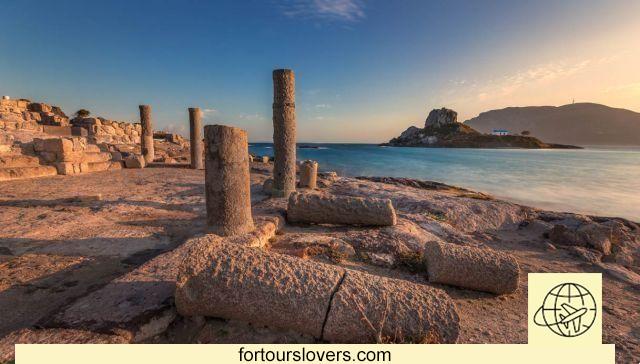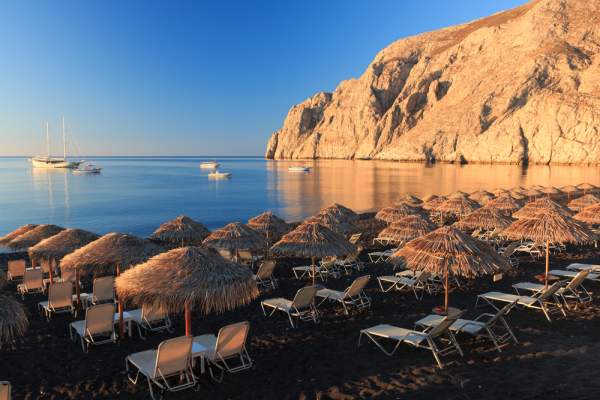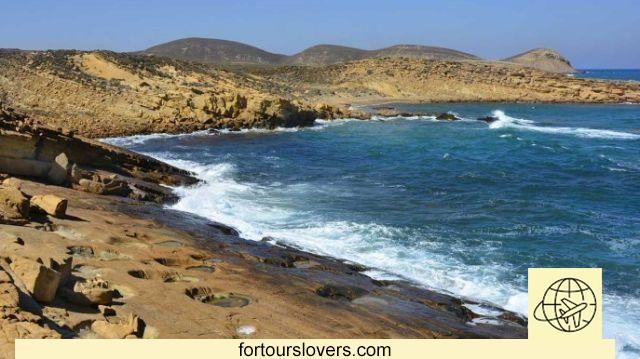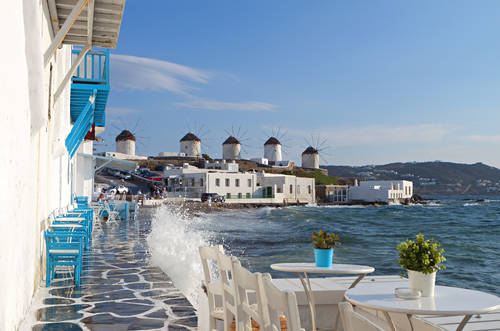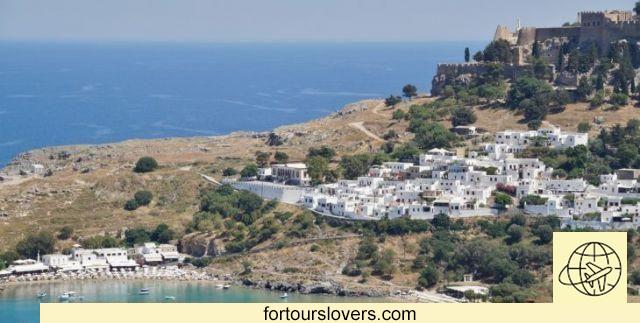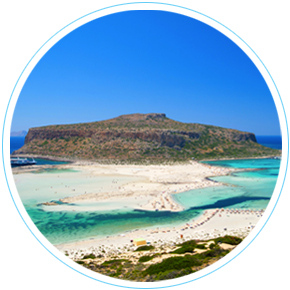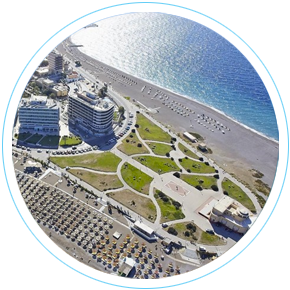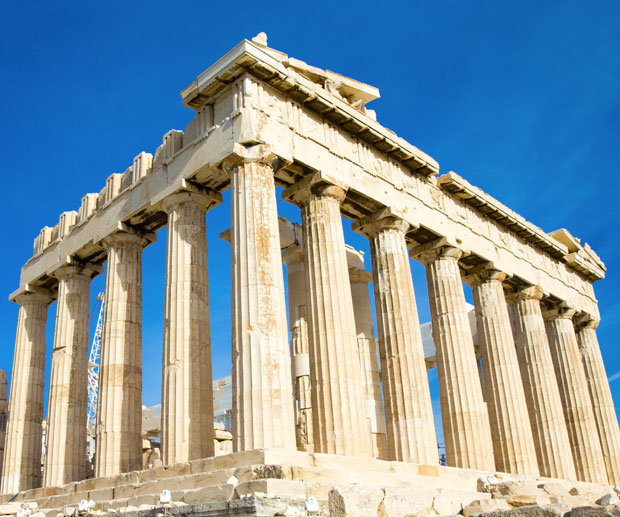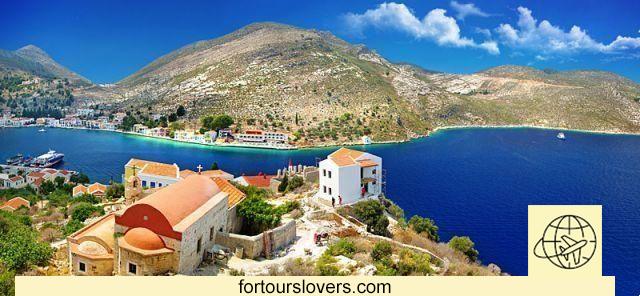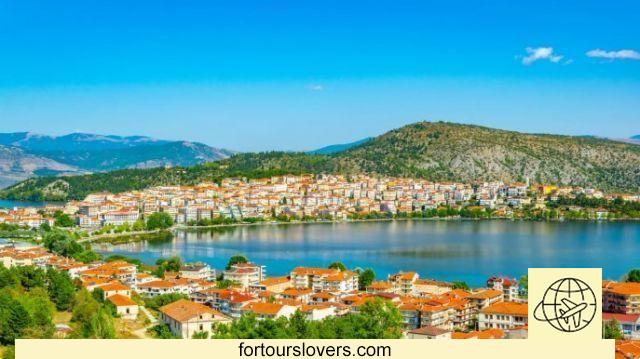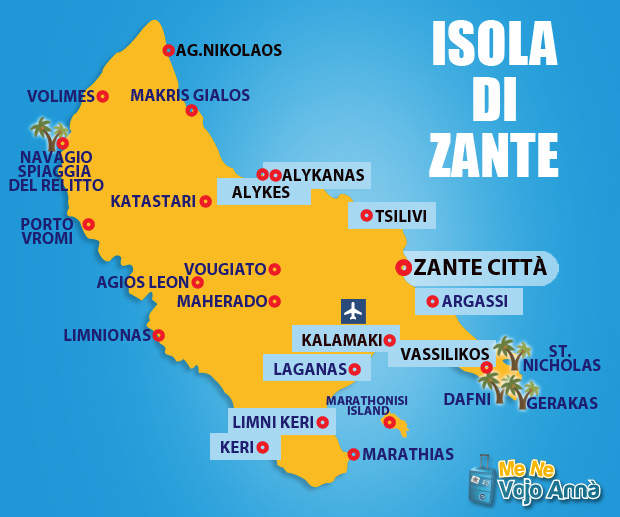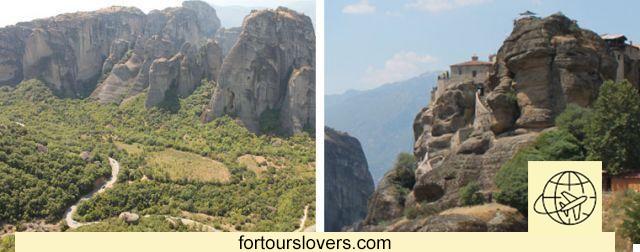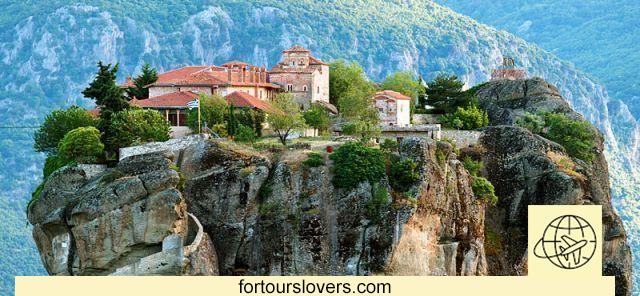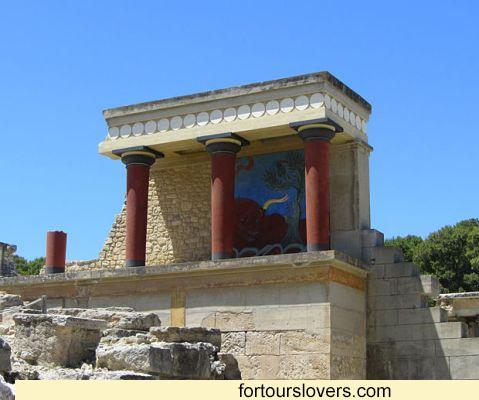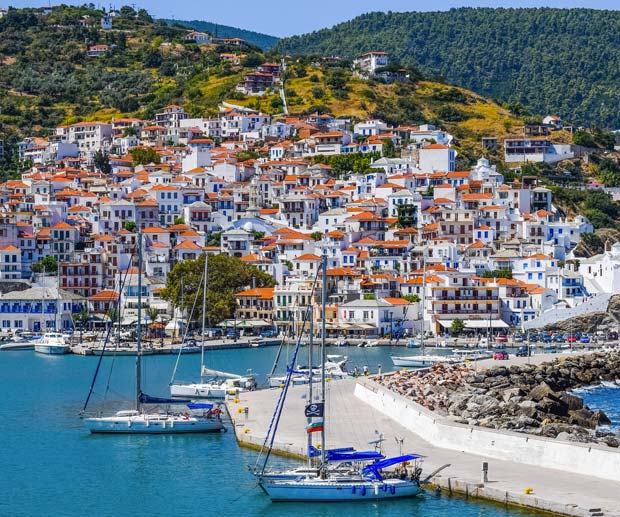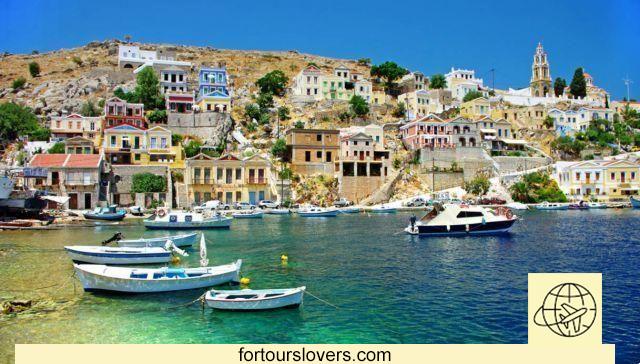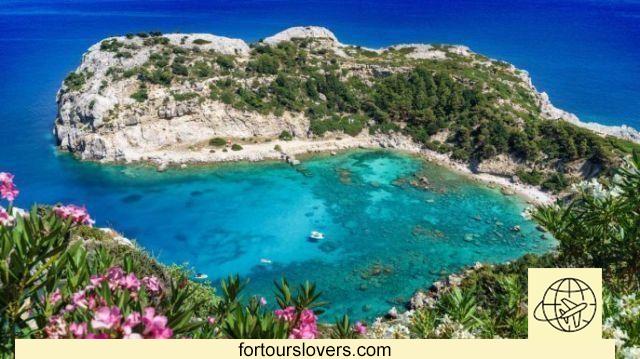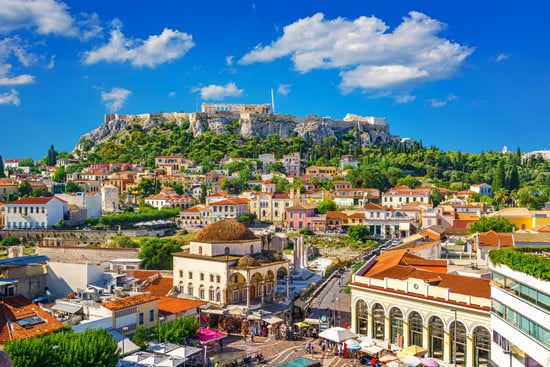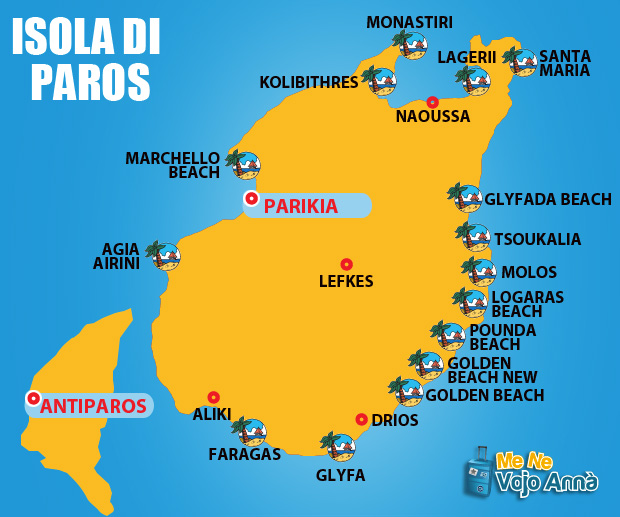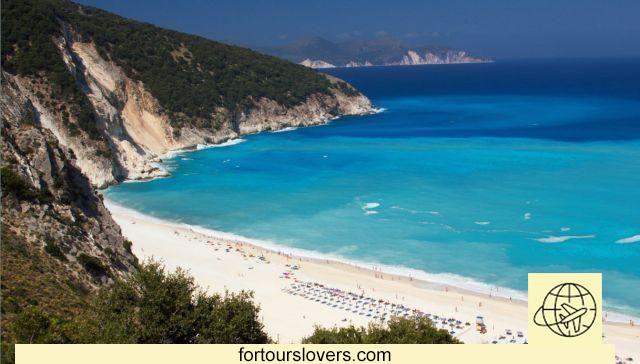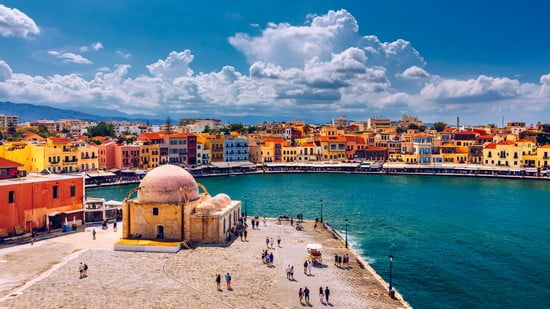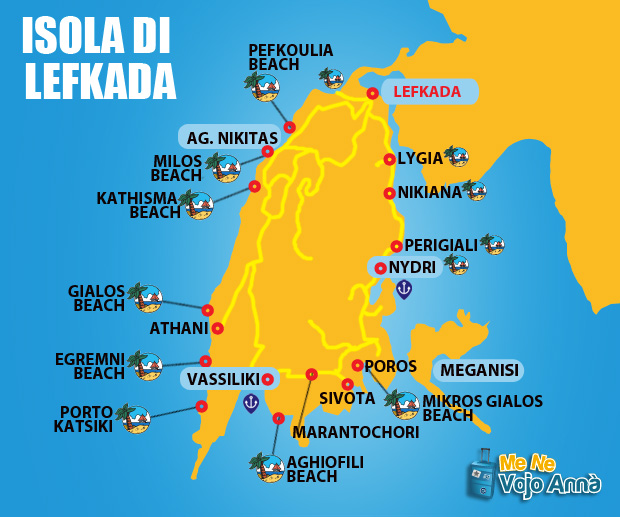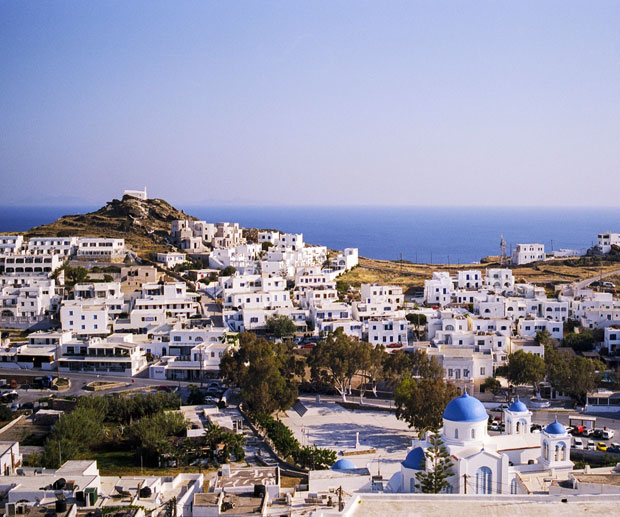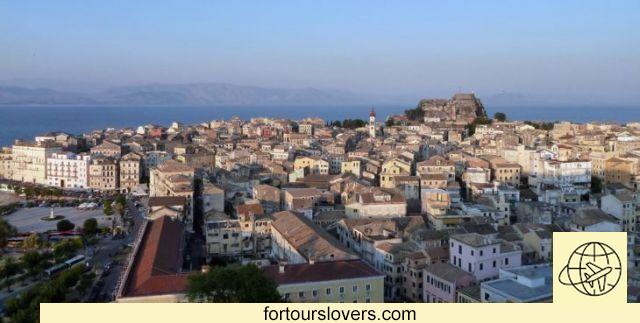
Corfu
12 things to do and see in Corfu and 2 not to doMore than the classic vestiges, which are not lacking, Corfu is indebted above all to the historical-cultural level very long Venetian domination which lasted from the fourteenth to the end of the eighteenth century. This circumstance has kept the island safe from any Eastern Turkish influence, a unique fact in the history of Greece. The Venetian domination, moreover, together with the short but intense English season (from 1815 to 1864) allowed a better dialogue between ancient and modern buildings, which is particularly evident in the capital of the same name of the island where just under a third (approx. 30.000 inhabitants) of the 100.000 e pass residents scattered throughout territory. The situation changes for the hinterland and coastal areas. Even today the inland areas of the island live mainly on agriculture, in particular the olive tree cultivation which here has origins that are lost in the mists of time. The coastal areas, on the other hand, have suffered the contamination of mass tourism that today gives a living to most of the Corfiots, even if many corners of peace where fishing is still the main activity still resist. Below we go to see the main attractions of the island starting, of course, with those of its capital. Happy reading.
1 Corfu Old Town
The historic center of Corfu (Kérkyra in Greek) is the obligatory starting point for a holiday on the island. Since 2007 UNESCO World Heritage Site, it is in the old part of the capital that the Venetian and English architectural influences we mentioned at the beginning are most evident. According to many, the most fascinating neighborhood is Cambiello, a maze of narrow streets (kantounia) flanked by 4 and 5-storey buildings. An ancient building, largely survived the Second World War, which gives a retro charm to the whole area. There Spianadainstead, it is the main square of Corfu and is located in front of the Ancient fortress, one of the two fortified citadels (the other is the New Fortress) with functions of sighting and defense of the dangers coming from the sea. In the Ancient Fortress stands the Church of St. George. Built by the British, this church impresses with the colonnade of the external facade in open similitude with a Doric temple. Furthermore, not far from the Ancient Fortress is the Royal Palace, the largest building in Corfu, also built in a neoclassical style by the British. The sandstone with which it was built was brought from Malta which, like the Greek island, was under the British protectorate in the XNUMXth century. The Ancient Fortress, the Royal Palace, the Byzantine Museum and the other museums in the area can be visited with a single ticket purchasable at each of these facilities.
2 Church of San Spiridione
The imposing bell tower of San Spiridione (Agios Spiridonas), with its characteristic red dome, ago from fixed background to visit the historic center of Corfu. The patron saint's church is by far the most famous religious monument on the island. The interior, a a nave, is richly decorated with frescoes, sacred icons, ex voto, candelabra and chandeliers. All strictly in gold and silver, including the wonderful coffered ceiling. And to say that San Spiridione is not a native of Corfu. The saint, in fact, is originally from Cyprus and it is there that he carried out most of his pastoral activity. After the fall of Constantinople the body was moved to Corfu and it was decided to build a temple to house it properly. The coffin with the relics is a continuous object of worship by the Corfiots who attribute various miracles to San Spiridione to protect the city. From aid against plague epidemics, to the expulsion of the Saracens, to the protection of sailors and fishermen, there are many areas in which the saint's intercession would have acted positively. For this reason the relics are brought in procession through the streets of Corfu 4 times a year: Palm Sunday, Easter, 11 August and the first Sunday in November. It is forbidden to take photos inside the church. A appropriate clothing to the sacredness of the place.
3 Paleopolis
Il archaeological site of Paleopolis is a a must of a visit to Corfu. It is located in the Kanoni Peninsula (about 2 km south from the historic center of the capital) and offers a very interesting insight into the antiquity of the island, central to the traffic along the Adriatic and Ionian routes already before the advent of the Greeks and Romans. The excavations, which began around the middle of the XNUMXth century, have brought to light theagora of the ancient city, the remains of the military port of Alcinoo (king of the Phaeacians), the remains of the thermal baths of the Roman period, the ancient Byzantine basilica, sanctuary of Artemis-Gorgone it's a tower of the ancient city walls. A few minutes walk from the Roman baths is located Mon Repos Palace (see photo), a building dating back to the English domination, later owned by the Greek royal family and today the seat of the Museum of the History of Paleopolis. Nine rooms in which in addition to the history of the excavations of Paleopolis, the flora of the beautiful park surrounding the residence is described. In short, the visit the excavations of Paleopolis plus the Mon Repos Museum provides the visitor with valuable information not only of the classical period, but also of the legendary era of the Phaeacians, the inhabitants ofisland of Scheria which, according to what Homer reported in the Odyssey, provided Ulysses with the ship to return to Ithaca. According to another interpretation, which however has never found the same echo in the academic field, Scheria would coincide with the island of Ischia and not with Corfu.
For the opening hours of the Mon Repos Museum see the table.
| Days | Working Time |
| Mon | closed |
| Tue-Sun | 08:00 15:00 |
More information on the excavations and on the Mon Repos Museum al website: paleopolis.ba.iac.cnr.it.
4 Vlachérna and Pontikonissi Monastery
Not far from the center of Corfu, opposite the city airport, there are two of the most photographed places on the island. The first is a little one monastery of the '700 whose peculiarity consists in the fact that it was built on an islet named Vlachérna. Little more than a rock from which, however, it is possible to reach another island of great charm, a favorite destination of Empress Elisabeth of Austria. We are talking about Pontikonissi (trad. Island of mice) which houses a Byzantine chapel of the XII century surrounded by tall cypresses. This island, in addition to fascinating Princess Sissi, seems to have been a source of inspiration for the Swiss artist Arnold Böcklin, author of the famous painting Die Toteninsel (trad.Isle of the Dead). A canvas that marked the history of twentieth century art and that fascinated personalities of the caliber of Lenin, Hitler and Freud. However, in more recent years, other hypotheses have been advanced about the place from which Böcklin (who made 5 different versions of the work) drew inspiration. Among these, Ischia returns which, as we have seen, also contends with Corfu for the geographical identification of Scheria, the mythical island of the Phaeacians.
5 Achillion Palace
Take the Corfu-Achillion highway you have to follow the directions for Agios Deka and from there those for Gastouri village. Winding paths, olive groves as far as the eye can see up to an imposing one neoclassical style building dating from the late XNUMXth century. It was theEmpress Elisabeth of Austria that in Corfu he found the necessary peace to placate, at least a little, the sufferings of a rather troubled life. Also the dedication of the building to Achilles it was a tribute from Princess Sissi who even dedicated one to the Homeric hero statue with the famous scene of the pierced heel from Paris. After the death of Empress Elizabeth, the palace was bought by William II of Prussia who made several improvements, including the installation of a new sculpture dedicated to Achilles, this time however in the pose of a victorious warrior. The arrival of the First World War with the French occupation and, later, of the second conflict with the Italians and Germans in the role of occupiers, led to a long decline of the private building of numerous works of art. It took a long time before Greece finally managed to report Achillion Palace to its former glory.
For more information on the history of Palazzo Achillion visit the place: www.achillion-corfu.gr (English version available).
6 Lake of Korission
The southern coast of Corfu is a succession of small and medium-sized villages where tourist development has spread like a patch. Some locations, such as Messonghi e Moretika in the south-eastern side, they reached a good level of hotel accommodation; others, on the other hand, as already mentioned at the beginning, remain anchored to the more cadenced rhythms of agriculture and fishing. In any case, we are talking about beautiful landscapes, characterized by long stretches of sand and typically Mediterranean settings. It deserves a stop Lefkimi, municipality of about 3000 inhabitants with a small river port which allows local fishermen to moor their boats. It deserves even more the Korission lake on the south-western side. In this case we are talking about one area of great naturalistic interest. A lagoon close to the sea crossed by a bridge that leads to a small grove on the sand. Ducks, cormorants, herons and numerous other bird species populate this unique habitat which, from a landscape point of view, gives the best of itself on making the sunset. So don't forget your camera!
7 Pelekas
It is worth taking your camera too Pelekas, hilltop village of west central coast of Corfu. Pelekas has a particular history, as in the 70s of the last century it became one of the most popular hippie destinations in Europe. Pristine beaches, olive groves, vineyards and a small hilltop village have represented for years the ideal context for artists, naturists and more or less eccentric characters in search of places out of the ordinary. Today things have definitely changed, but in part Pelekas has kept its reputation sui generis. A fame due not only to his acquaintances, also to William II's passion for the place. In particular, for a panoramic point in the hills from which the emperor of Prussia and Germany admired in amazement the wonderful Corfu sunsets. Not surprisingly, the viewpoint in question was renamed the Throne of the Emperor (Also Kaiser Observatory, see photo) and has long been one of the main attractions of the island. Also worth seeing Mirtiotissa monastery 200 meters from the beach of the same name, one of the three beaches reachable from the resort (the others are precisely Pelekas and Glifada).
8 Paleokastritsa
The most beautiful place in the world. This is how many Corfiots believe Paleokastritsa. Certainly parochialism plays a decisive role in formulating the judgment, but we are not that far from the truth. Indeed, this one bay at the foot of the municipalities of Lakones and Liapades it is absolute one of the most beautiful places in the Mediterranean. The judgment weighs positively on bothalternation between rocky inlets and small stretches of beach, both the landscape behind the bay. For example Lakones, the hilltop village famous for the panorama, also this emphatically renamed the "balcony on the Ionian". Liapades, instead, it presents the typical features of Greek village, especially the town square with its small group of bars and taverns mostly frequented by the local population. Very nice too Monastery of the Holy Mother of God of Paleokastritsa. Its location overlooking the sea has over time made it one of the most visited attractions in Corfu. Not to be missed!
9 Angelokastro
Less than 3 kilometers from Lakones there is the mountain village of Makrades, famous throughout Corfu for the sale of wine and aromatic herbs. Makrades, in turn, is less than 2 kilometers from the Angelokastro fortress construction of the thirteenth century commissioned by Michael II of Epirus. For centuries, the inhabitants of the northern side of Corfu found refuge inside this fortified citadel every time the pirates - Genoese first and then Turks - lapped the coasts of the island. The impregnability and the panoramic view of the fortress are the two reasons that have contributed to its tourist appeal, even if the last stretch of the path to get to the top is not suitable for everyone. Finally a curiosity. The other topos by which the castle is known is "Fortress of the Angels". However, it is not clear whether the name refers to the habit of Michael II of Epirus to add the appellative "of the Angels" to his signature or whether it refers to the presence, inside the walls, of a small chapel. dedicated to San Michele Arcangelo. Anyhow, to be seen!
10 Chief Drastis
"Miracle of nature"; "Dizzying panorama"; "Extraordinary scenery"; “Incredible view”. Those transcribed are only a tiny fraction of the comments found on the net about Capo Drastis, a rocky inlet on the northwestern side of Corfu. Access is from Perulades, a small town of about 800 inhabitants. You have to go along a dirt road that leads to a panoramic point from which you can take wonderful photos, especially at sunset. Absolutely one of the most beautiful places to photograph in Corfu. Not to be missed!
11 Canal d'Amour
Anyone wishing to see Cape Drastis from the sea can do so by renting a boat from the nearby Sidari, in all probability the more developed tourist resort of all Corfu. On the main road it is all one a succession of bars, restaurants, boutiques, souvenir shops and, of course, hotels for all budgets. In short, a place that has adapted to the needs of mass tourism at the expense of that all-Greek authenticity which, fortunately, survives in many other parts of the island. Not far from Sidari there is also the very famous Canal d'Amour, a rocky inlet that ends with a small but suggestive beach. The place is wonderful and reconciles with that Greek authenticity mentioned above. Only, we must avoid staying long in the high season. The proximity to Sidari, inevitably, has made the little beach of Canal d'Amour extremely popular, well beyond its capacity to accommodate. Even net of these criticalities, however, making a visit to Canal d'Amour is certainly among the things to do in Corfu. To be seen!
12 The beaches of Corfu
The beaches of Corfu are so many that it is difficult to describe them all. Among other things, we have already talked about some during the article. Messongi, Moretika, Pelekas, Glyfada, Mitriotissa, Paleokastritsa they are all beaches that deserve from a landscape-environmental point of view. To these we can add Agios Gordis which is located on the west coast, halfway between Lake Korission and Paleokastritsa, or even higher (after Paleokastritsa) the beaches of Agios Gorgios e Arillas. On the east coast, however, we point out the beach of Battery (in Kassiopi) and, a little further down, the beaches of Kaminaki e Men. In short, between sandy, rocky and pebble coasts Corfu really boasts a remarkable variety, without forgetting the nearby islets. We said to Pontikonissi but woe to not mention Vidos, just in front of Corfu (capital). The island, in addition to several pebble beaches where you can relax and swim, hosts a mausoleum dedicated to the Serbian soldiers who died in the war in Corfu during the First World War. From the port of Corfu i connections are frequent during the summer period with the further possibility of making the classic tour of the island by motorboat to admire in more detail the coastal variety and the lush vegetation of the island.
1 Do not wear inappropriate clothing when visiting churches, museums and villages
In this regard, what has already been said also applies to Rhodes. Corfu is an international tourist resort accustomed to nudity, bikinis and skimpy clothing. Precisely for this, however, it is required sobriety in clothing when visiting churches, museums or the inland villages where the mentality is definitely more anchored to traditional values. And, still speaking of clothing, be careful not to forget comfortable shoes in the suitcase. Among secondary roads, lanes and paths to get to the sea you need to wear at least sneakers (even better if for trekking) with good grip on the ground. Warn!
2 Pay attention to the price of fish
Fresh fish in Corfu's restaurants is expensive. In truth, it is a trend that affects all of Greece, especially the islands with the greatest tourist appeal. And the crowding suggests doing also pay attention to the so-called "tourist traps". Those restaurants, that is, that promise a lot and keep little in terms of both quality of food and services.




